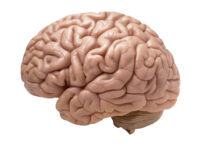The age-old myths that humans use 10% of their brains, or that the brain stops developing after the age of 25, have resulted in the underestimation of the complexity of this powerful organ. Until about the 1960s, scientists believed that the brain is static, or unchanging, after it reaches a certain stage. In 1964, neuroscientist Marion Diamond published the results of the first experiment that demonstrated the brain’s ability to alter its composition and adapt to stimuli. By exposing rats to enriched and impoverished environments, Diamond found that mentally stimulated rats subjected to complex environments had larger cerebral cortexes compared to under-stimulated rats.
The results of Diamond’s experiment were initially met with skepticism from scientists. However, after experimental replications of the experiment and further studies, the scientific community began to embrace the idea of a dynamic, ever-changing brain. This concept is known as neuroplasticity and is highlighted by the case study of Mora Leeb, whose story showcases the transformative and essential nature of neuroplasticity.
“The story of Mora Leeb demonstrates how powerful the brain is and the implications of a neuroplasticity-based approach to caring for patients who have suffered from traumatic brain injuries.”
While Mora Leeb was in utero, the left side of her brain suffered a near-fatal stroke, cutting off blood supply to the brain, resulting in destruction of neurons, glial cells, and white matter. This stroke initially went undetected by medical professionals. She appeared to be a healthy baby, reaching appropriate developmental milestones such as smiling and rolling over. However, a few months later, Mora began having epileptic seizures, and an MRI scan revealed that almost all the cells in her left hemisphere had died. The few remaining cells were firing excessively, resulting in frequent seizures.
To save her life, doctors removed the tissue from the left half of Mora’s brain in a hemispherectomy. The surgery left Mora with an essentially “blank” state, wiping away the crucial developmental progress she made as a toddler. Since the left side of the brain controls the motor output of the right side of the body, the right side of her body was temporarily paralyzed.
Mora’s subsequent recovery demonstrates the fascinating power of neuroplasticity and its potential implementations in neurorehabilitation. The two main types of neuroplasticity, structural and synaptic, allow for heightened neuronal activation. They also promote the development of increased neuronal “branches” and synapses, creating more connections between neurons.
These aspects of neuroplasticity played a vital role in Mora Leeb’s recovery as she underwent years of physical therapy, occupational therapy, and speech therapy. Her physical therapy program implemented repetitive task training and constraint-induced movement therapy. These practices allow synapses to be strengthened through long-term potentiation, allowing for motor control to be eventually regained. Another therapy method involves using electrical impulses to produce muscle contractions in weak muscles, further strengthening connections between motor neurons and muscle cells. Because of her physical therapy, Leeb is able to walk and move normally, although the right side of her body is still a bit weak compared to the left.
With the loss of the left hemisphere, Mora also lost access to Broca’s area and Wernicke’s area. Mora also likely suffered from aphasia, therefore needing speech-language therapy in order to regain and strengthen her language skills. Aphasia therapy aims to reorganize brain structure to allow other parts of the brain to take on language processing. Some methods include melodic intonation processing, constraint-induced aphasia therapy, and semantic feature analysis. Through these therapies, synaptic connections between neurons are strengthened, and new connections are made through the growth of dendrites and axons. Sure enough, the right hemisphere of Mora’s brain was able to adopt the functions of these two areas.
Although neurorehabilitation programs were instrumental in helping Mora Leeb recover from a life-threatening stroke and subsequent hemispherectomy, the application of neuroplasticity to speech and physical therapy cannot fully reverse the damage of losing an entire hemisphere. Regardless, the extent to which neuroplasticity allowed Mora to regain the use of her motor and language acquisition skills opens up a plethora of research avenues, having great impacts on the treatment of Alzheimer’s, depression, and anxiety.
Alzheimer’s, a form of dementia, includes memory loss, changes in mood and behavior, and difficulty speaking. Aspects of neuroplasticity such as the dysfunction of synapses play a role in the onset of Alzheimer’s, which is characterized by decreased neuron functioning, loss of neural connections, and neural death. Non-invasive brain stimulation via transcranial magnetic stimulation has been identified as a tool that can target the decrease of synaptic plasticity and offers a potential treatment option for Alzheimer’s.
Neuroplasticity also has a great impact on mental health and the quality of life. When the brain suffers from a state of high stress, or a mood disorder such as depression, neuroplasticity is negatively affected. Chronic stress can decrease neurogenesis in the hippocampus — the only part of the brain where new neurons grow everyday — which can cause a decline in concentration, attention, and memory. Similarly, major depressive disorder is also associated with larger amygdala, which can lead to an increased fear and anxiety response. Medications, such as SSRIs or tricyclic antidepressants, can mitigate the losses of neuroplasticity by increasing the number of synapses and retaining neurogenesis.
Other avenues for increasing neuroplasticity also hold potential when combined with medication. Exercising, playing instruments, listening to music, participating in novel activities, or playing brain games can all increase neuroplasticity, so they can be implemented into psychotherapy. Even for those who do not experience chronic stress or mental illnesses, implementing habits such as routine exercise and a healthy diet rich in polyphenols and omega-3 fatty acids can increase neuroplasticity and prevent or delay cognitive decline.
Since the concept of neuroplasticity has been discovered, it has been used to explain and provide treatment for various neural and psychiatric disorders. The story of Mora Leeb demonstrates how powerful the brain is and the implications of a neuroplasticity-based approach to caring for patients who have suffered from traumatic brain injuries. Currently, Mora is almost fully recovered, and at 16 years old, she is a healthy teenager who attends school, plays sports, tells jokes, and loves reading. According to her father, the progress she has been able to make is remarkable thanks to years of neuroplasticity-informed therapies. Neuroplasticity has not only revolutionized the field of neuroscience, but its implications benefit society as a whole, offering hope and providing treatment opportunities for previously incurable conditions.
- Neuroplasticity (2024). PMID: 32491743
- International Journal of Molecular Sciences (2024). DOI: 10.3390/ijms20246193
- Cureus (2023). DOI: 10.7759/cureus.45873
- Neurobiology of Language (2020). DOI: 10.1162/nol_a_00025
- Frontiers in Behavioral Neuroscience (2019). DOI: 10.3389/fnbeh.2019.00075
- Stroke (2017). DOI: 10.1161/STROKEAHA.117.016503
- Frontiers in Psychology (2016). DOI: 10.3389/fpsyg.2016.01118
- Dementia & Neuropsychologia (2009). DOI: 10.1590/S1980-57642009DN30400003






